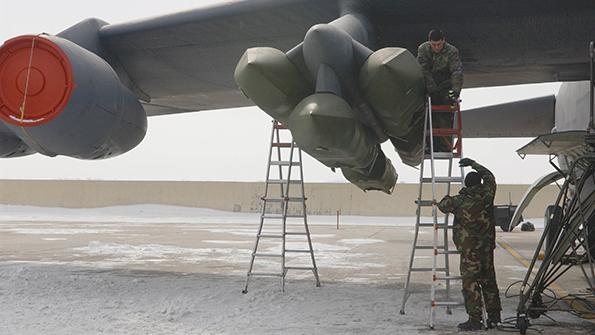
After successfully fielding only one new cruise missile during the past 30 years, the U.S. Defense Department hopes to multiply that result over the next decade.
Two new candidates for a future hypersonic cruise missile are currently in testing, while a third has entered the design phase. A subsonic replacement for a nuclear version of the Boeing AGM-86 air-launched cruise missile is in development. Another replacement for the Navy’s RGM/UGM-109 Tomahawk is on the drawing board and may be adapted for a nuclear role as well.
- Scramjet-powered cruise missiles gain traction
- INF Treaty demise restarts production of ground-launched cruise missiles
Meanwhile, new versions of the Lockheed Martin AGM-158 Joint Air-to-Surface Standoff Missile (JASSM) and the Tomahawk missiles are set to enter production. Finally, a new class of air vehicle that blurs the line between a cruise missile and an unmanned aircraft system is gaining traction.
The Biden administration, however, might intervene. Two nuclear cruise missile projects—the Air Force’s Raytheon Long-Range Standoff (LRSO) and the Navy’s sea-launched cruise missile (SLCM-N)—could become targets of a pending review by President Joe Biden’s appointees of the $1.2 trillion nuclear modernization program. And the extent to which Biden’s national security team supports conventional hypersonic cruise missiles is not yet apparent.
But U.S. military support has never been higher for a powered alternative to ballistic missiles with the capability to maneuver during a flight without sacrificing speed.
In the category of hypersonic weapons, scramjet-powered cruise missiles are seen as a more affordable and versatile option than the larger and more expensive hypersonic glide vehicles, such as the air-launched Lockheed AGM-183A.
As recently as December 2018, senior defense officials viewed scramjet propulsion as less mature than rocket-boosted hypersonic gliders. But scramjet technology has evolved rapidly in wind tunnel testing.
In 2020, Aerojet Rocketdyne demonstrated that an 18-ft.-long scramjet engine could generate 13,000-lb. thrust in a wind tunnel. Northrop Grumman Innovation Systems achieved the same result with another scramjet design in 2019. Both engines are now set to enter flight testing in 2021 under DARPA’s Hypersonic Air-Breathing Weapon Concept program; Aerojet has partnered with Lockheed, and Northrop has teamed up with Raytheon. A follow-on operational prototyping program, known as the Hypersonic Attack Cruise Missile, is set to begin, and air-launched and sea-launched versions are possible.
A third option could enter the competition this year. In November, the Pentagon awarded Boeing a contract to complete a preliminary design and component-level testing of the Mach 5-plus HyFly 2, a concept for a dual-combustion, ramjet-powered cruise missile optimized for the Navy’s carrier decks.
All three conventional hypersonic cruise missiles are expected to enter service years before the Air Force fields the nuclear LRSO, but the program is making progress. The Air Force selected Raytheon over Lockheed to continue development of the LRSO, which will be armed with an upgraded W80-4 warhead.
The LRSO entered development under the Obama administration, but the SLCM-N joined the future arsenal following the Trump administration’s Nuclear Posture Review. A Navy analysis recommended developing the SLCM-N as a nuclear variant for the Next-Generation Land Attack Weapon (NGLAW), which is intended to replace the ship- and surface-launched Tomahawk.
As a bridge to the fielding of the NGLAW, the Tomahawk itself reentered production in 2020 to support the improved Block V variant. The Maritime Strike Tomahawk, which integrates a new seeker, is scheduled to enter service in 2023.
Ground-launched cruise missiles (GLCM) also are making a comeback since the demise of the Intermediate-Range Nuclear Forces Treaty in August 2019. That 31-year-old pact compelled the Air Force to retire an arsenal of deployed BGM-109G Gryphon missiles. But conventional GLCMs will reenter the arsenal. Last November, the Army selected the BGM-109 Tomahawk to form half of a new Mid-Range Capability with a ground-launched version of the Raytheon SM-6 in 2023.
Lockheed’s AGM-158 JASSM provided the Air Force a stealthy option to strike targets at ranges of up to 500 nm. Although the AGM-158 fell far short of the AGM-86C conventional air-launched cruise missile, the Air Force allowed the latter to be retired from service with no direct replacement in November 2019. That gap will be addressed partially by the fielding in 2024 of the AGM-158D, a new version of the JASSM with a range of up to 1,000 nm and the same radar cross section.





